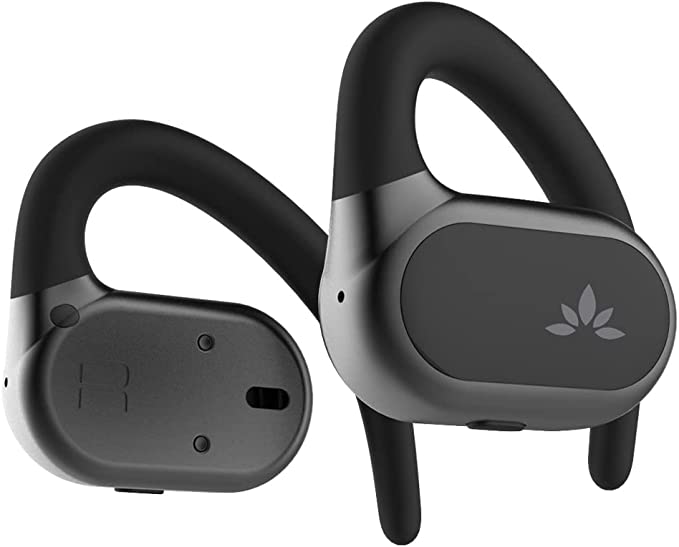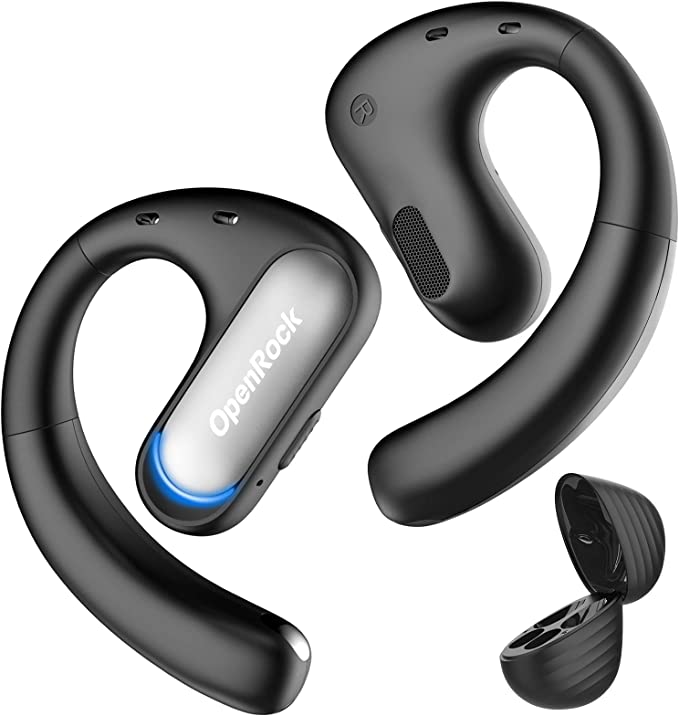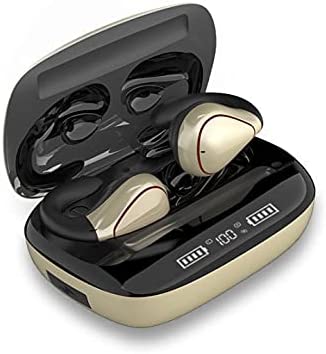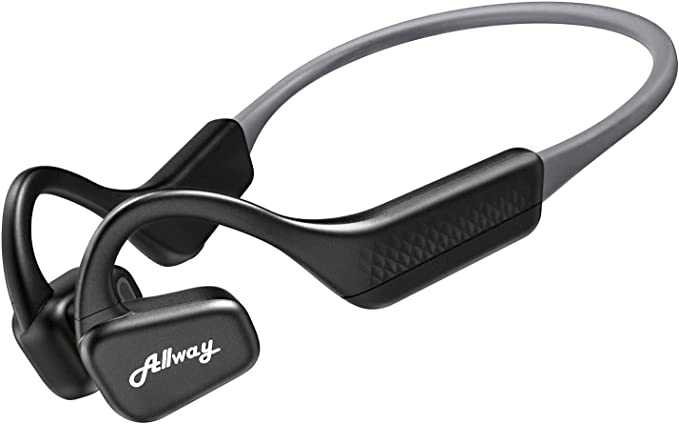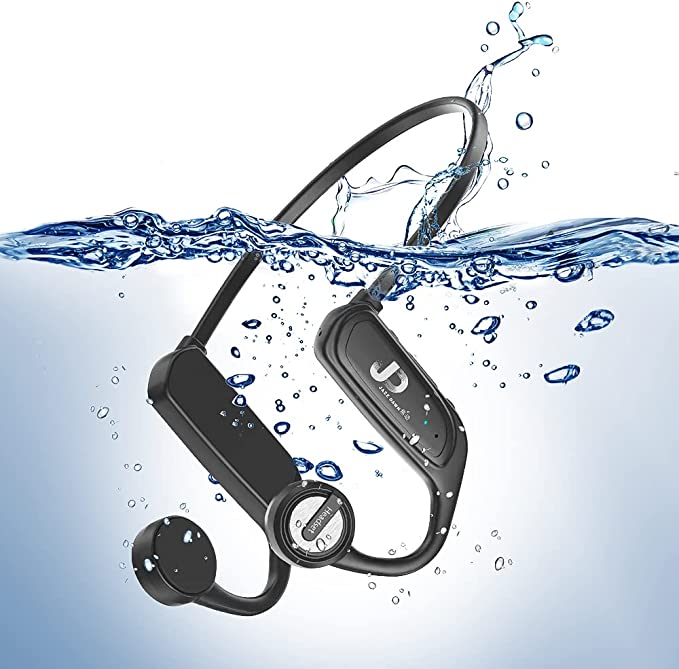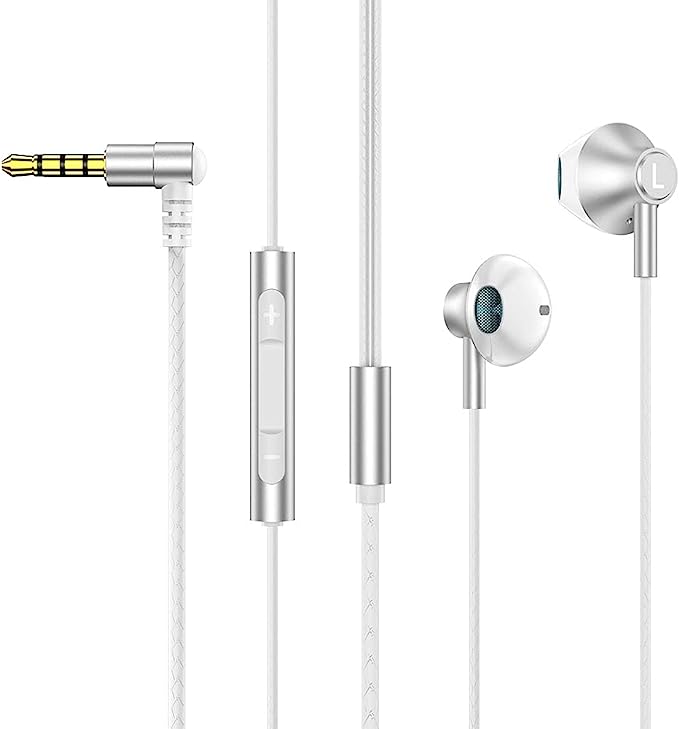Sunffice X5 Single Ear Bluetooth Headset: Comfortable, Lightweight and Long Battery Life
Update on July 4, 2025, 9:51 a.m.
There’s a moment of betrayal that many of us have felt. It comes at the end of a long day of video calls or after a lengthy podcast binge. It’s a dull, persistent ache deep inside the ear, a feeling of physical offense from the very technology meant to connect us. It’s the moment you realize your earbuds—your sleek, tiny portals to another world—have turned against you, transforming a simple act of listening into a low-grade form of torture. I’ve been there. I once thought my ears had simply given up, too sensitive for the modern world. But the problem wasn’t with my ears; it was with the silicon and plastic cages I was forcing into them.
We fell in love with the idea of immersion, of creating a perfect, private bubble of sound. In our quest for noise-cancellation and pounding bass, we adopted in-ear headphones that function like well-fitted corks, sealing us off from the world. But this sonic isolation comes at a cost, not just to our comfort but to our connection with our surroundings. This has sparked a quiet revolution in personal audio, a movement away from total isolation and towards a more harmonious coexistence with our environment. It’s a design philosophy embodied by devices like the Sunffice X5 Ear Hook Wireless Headphone, which serve as a fascinating case study in what happens when technology decides to be kind to our bodies.

A Window for Your Ears: The Philosophy of Open Design
Imagine living in a room with no windows. The walls are soundproofed, the lighting is perfect, and you have complete control over your environment. This is the promise of a traditional in-ear headphone. It’s a powerful, immersive experience. Now, imagine opening a window. You can still hear the music playing inside your room, but you also hear the distant chime of a bell, the gentle hum of life outside, and the voice of someone calling your name. The music is no longer your entire reality; it’s the soundtrack to your reality.
This is the essence of an open-ear design. It’s not a product feature; it’s a philosophical choice. By refusing to plug the ear canal, these devices choose collaboration over conquest. They aim to add a layer of audio to your world, not replace it entirely. This approach fundamentally changes the user experience from one of passive consumption in a sealed chamber to one of active engagement with a digitally augmented environment.

The Architecture of Comfort: A Lesson in Anatomy
The persistent ache from earbuds isn’t a sign of weakness; it’s a predictable biomechanical response. To understand why, we need a quick tour of our ear’s architecture. The part we try to stuff with silicone is the external auditory meatus, or ear canal. It’s a delicate, sensitive tunnel lined with thin skin over bone and cartilage, designed by nature to channel sound waves, not to bear weight or constant pressure. It’s no wonder it protests when occupied by a foreign object for hours on end.
Open-ear hook designs, like that of the Sunffice X5, smartly sidestep this problem. They rely on a completely different part of our anatomy: the auricle or pinna—the visible, cartilage-rich outer ear. This structure is far more robust and is naturally designed to catch sound and, as it turns out, is perfectly suited to support a lightweight frame.
The effectiveness of this approach is magnified by the science of weight distribution. The Sunffice X5 weighs a mere 9 grams, roughly the weight of two sheets of paper. But more important than the low weight is how it’s worn. Think of the difference between carrying groceries in a plastic bag that cuts into your fingers versus carrying them in a well-designed tote bag with a wide, comfortable strap. The ear hook acts like that wide strap, distributing its minimal weight over a large, non-sensitive area. The result is an “unobtrusive” experience, a feeling of near-weightlessness that makes all-day wear not just possible, but pleasant.

The Sound of Reality: An Acoustic Trade-Off
The decision to leave the ear canal open has profound consequences for the physics of its sound. It creates a listening experience that is fundamentally different—not better or worse, but distinct. Sealed earbuds produce an “in-your-head” sound, a direct and intimate delivery. Open designs create a more natural “soundscape,” as if you have a pair of tiny, personal speakers hovering near your ears.
This comes with an inevitable, science-backed trade-off. To perceive sound, particularly low-frequency bass, our ears rely on changes in air pressure. When an earbud creates a seal, it can efficiently build up this pressure. Without that seal, much of that energy dissipates into the open air before it reaches the eardrum. This is why users of open-ear devices often report two things: the bass is less impactful, and the overall volume seems quieter. This isn’t a flaw; it’s the price of admission for gaining full situational awareness. It’s a conscious choice to trade a thumping bassline for the ability to hear an approaching bicycle.
Cleverly, the Sunffice X5 includes a small accessory to mitigate this: a soft ear cap. This simple piece of silicone is a small feat of acoustic engineering. It doesn’t seal the ear, but it partially covers the speaker, acting like a sound focuser or an acoustic magnifying glass. It narrows the path of the sound waves, directing more of their energy towards the ear canal and slightly boosting clarity and perceived volume—a simple, elegant solution to a complex acoustic challenge.
The Hidden Fire: A Serious Talk About Charging
The convenience of a battery that offers 5-6 hours of continuous use is a modern marvel. But with all small, battery-powered electronics, this convenience comes with a responsibility. A user review for the X5 mentions a deeply concerning incident: the device allegedly melting at the charging port. While this could be an isolated defect, it serves as a powerful, real-world lesson in the chemistry of lithium-ion batteries.
The heart of the issue is the charge rate, or C-rate. Think of your headphone’s battery as a small water bottle and the charger as a hose. A low-power charger (like an old phone charger or a standard computer USB port) is like a garden hose—it fills the bottle gently and safely. A modern, high-wattage fast charger is like a fire hose. While great for a large “bottle” like a new smartphone, its high current can overwhelm the simple charging circuits in a small device. This forces too much energy into the battery too quickly, generating immense heat. This heat can degrade the battery’s internal components, and in a worst-case scenario, lead to thermal runaway—a dangerous, self-sustaining chemical reaction. The warning is clear: using a powerful charger on a small gadget isn’t making it charge faster; it’s playing with fire. The smartest, safest way to care for these devices is to use the slowest, lowest-power charger you have.
Horizon: The Future of Listening is Weightless
Ultimately, a device like the Sunffice X5 isn’t for the audiophile chasing pristine sound reproduction in a silent room. Its design speaks to a different kind of user, one who has been left behind by the mainstream race for more noise cancellation and more bass. It’s a tool for restoring a healthier, more symbiotic relationship with both our technology and our world. It argues that the goal isn’t just to hear more, but to live better while we listen.
This points toward a more humane technological future. We are likely moving towards an era of truly weightless, “invisible” audio—devices so seamlessly integrated into our lives that we forget they are there. They will blend our digital streams with our physical reality, augmenting our world without overpowering it. They will be designed with a deep respect for our anatomy and our innate need to stay connected. The quiet revolution isn’t about a single product; it’s about a simple, powerful idea: technology should serve the human body, not the other way around.


